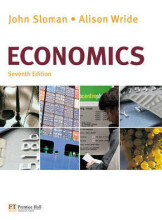Dynamics: Competing Across Time
15 important questions on Dynamics: Competing Across Time
What is the essence of strategy in the view of Ghemawat?
Name the four aspects of the framework to analyze commitment-intensive decisions by Ghemawat.
2. Sustainability analysis
3. Flexibility analysis
4. Judgement analysis
Explain positioning analysis in the framework designed by Ghemawat.
- Higher grades + faster learning
- Never study anything twice
- 100% sure, 100% understanding
Explain sustainability analysis in the framework designed by Ghemawat.
Explain flexibility analysis in the framework designed by Ghemawat.
Explain flexibility analysis in the framework designed by Ghemawat.
Explain judgement analysis in the framework designed by Ghemawat.
What is the learn-to-buy ratio?
Name four practices in which firms can facilitate cooperative pricing.
2. Advance announcement of price changes
3. Most favored customer clauses
4. Uniform delivered price
Explain price leadership in cooperative pricing strategy.
Explain advance announcement of price changes in pricing strategy.
future. For example, in chemicals markets firms often announce their intention to raise
prices 30 or 60 days before the price change is to take effect. These preannouncements
can benefit consumers, such as when cement makers announce prices weeks ahead of the
spring construction season, enabling contractors to bid on projects more intelligently.
Explain most favorite customer clauses in pricing strategy.
that it will pay the lowest price the seller charges. There are two basic types of most
favored customer clauses: contemporaneous and retroactive.
Explain uniform delivered prices in pricing strategy.
geographically separated and transportation costs are significant. In such contexts, the
pricing method can affect competitive interactions.
What is a tough commitment?
What is the puppy-dog ploy?
The question on the page originate from the summary of the following study material:
- A unique study and practice tool
- Never study anything twice again
- Get the grades you hope for
- 100% sure, 100% understanding































